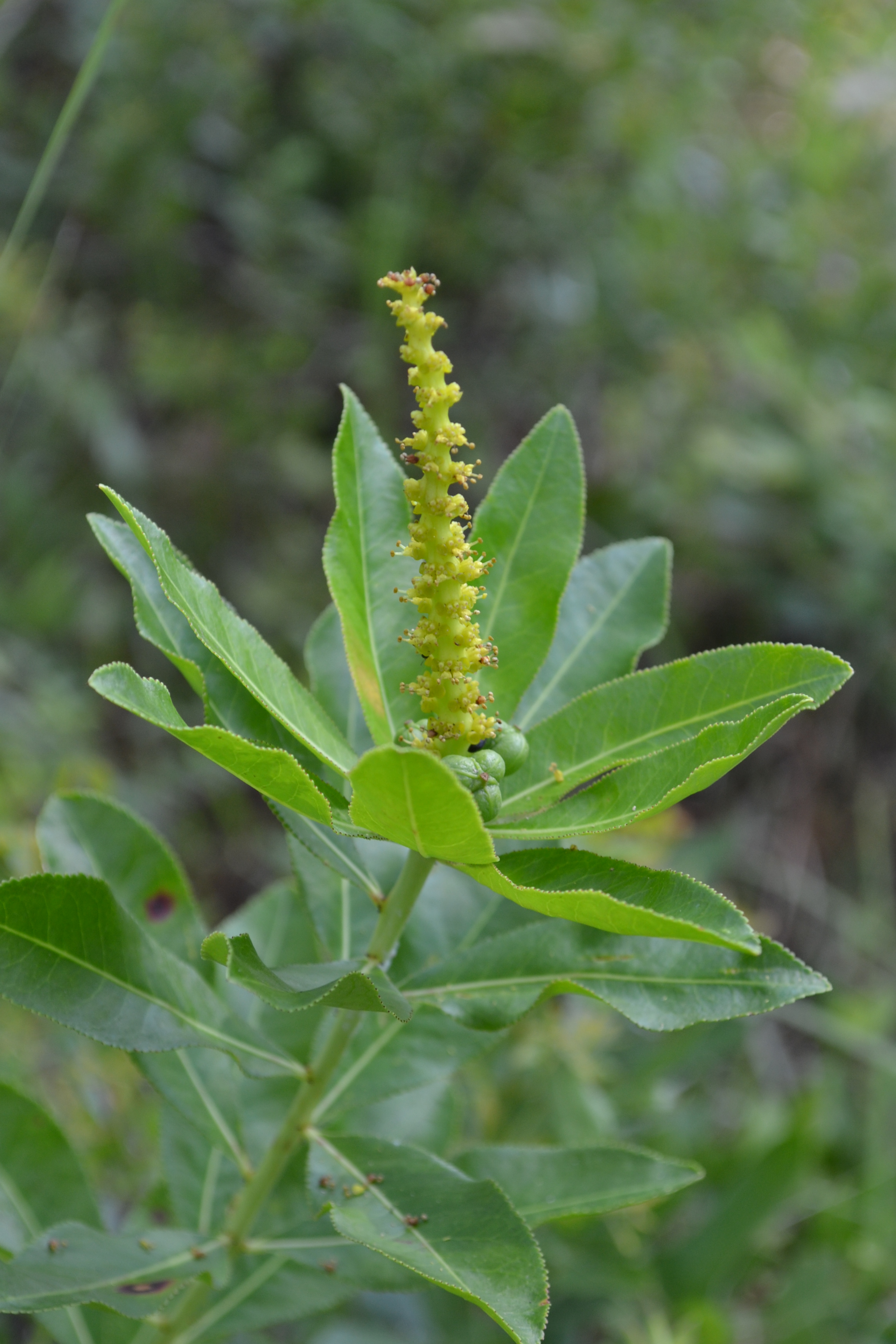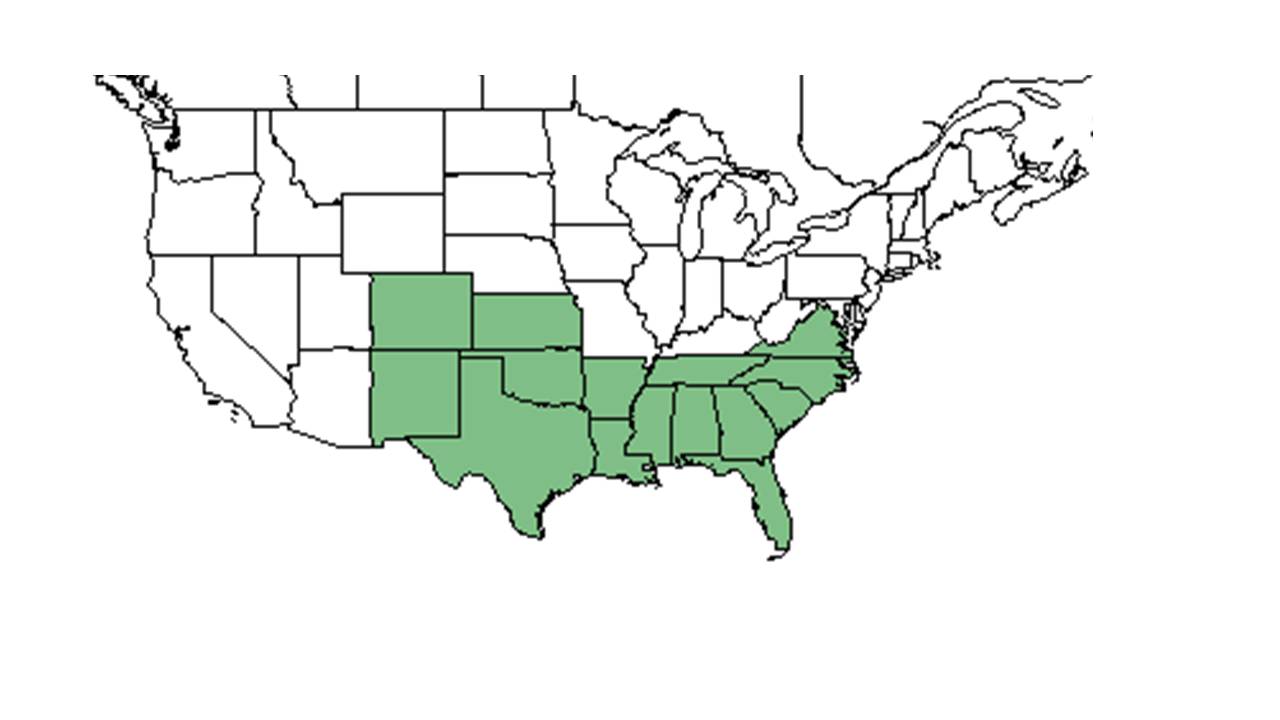Difference between revisions of "Stillingia sylvatica"
(→Description) |
|||
| Line 19: | Line 19: | ||
==Description== | ==Description== | ||
<!-- Basic life history facts such as annual/perrenial, monoecious/dioecious, root morphology, seed type, etc. --> | <!-- Basic life history facts such as annual/perrenial, monoecious/dioecious, root morphology, seed type, etc. --> | ||
| + | Common name: queen's-delight | ||
| + | |||
==Distribution== | ==Distribution== | ||
==Ecology== | ==Ecology== | ||
Revision as of 10:22, 6 July 2015
| Stillingia sylvatica | |
|---|---|

| |
| Photo taken by Michelle M. Smith | |
| Scientific classification | |
| Kingdom: | Plantae |
| Division: | Magnoliophyta – Flowering plants |
| Class: | Magnoliopsida – Dicotyledons |
| Order: | Euphorbiales |
| Family: | Euphorbiaceae |
| Genus: | Stillingia |
| Species: | S. sylvatica |
| Binomial name | |
| Stillingia sylvatica L. | |

| |
| Natural range of Stillingia sylvatica from USDA NRCS Plants Database. | |
Contents
Description
Common name: queen's-delight
Distribution
Ecology
Habitat
It can be found in sandhill communities (Stamp and Lucas 1990). Included in study where the area was a mixed stand of slash and longleaf pine where soils are mainly sandy, siliceous, hypothermic Ultic haplaquod of the Pomona series (Moore et al 1982).
Phenology
Seed dispersal
It is dispersed explosively (up to 3 meters); seeds are forcefully expelled after the fruit matures and dries. It can also be dispersed by ants (Stamp and Lucas 1990).
Seed bank and germination
Fire ecology
It seems to respond positively to burning. In an experiment by Greenberg, he noted that the percent cover of S. sylvatica was highest 16 months after a May burn (2003).
Pollination
Use by animals
Because S. sylvatica seeds contain elaiosomes, they are collected by ants (Stamp and Lucas 1990). “Seeds were found in middens of harvester-ant nests of Pogonomyremex badius Latreille. In addition, seeds of all three plant species were observed being carried into the ant nests and then later deposited uneaten at the nest perimeter.” – Stamp and Lucas 1990.
Diseases and parasites
Conservation and Management
Cultivation and restoration
Photo Gallery
References and notes
- Stamp, N. E. and J. R. Lucas. 1990. Spatial patterns and dispersal distances of explosively dispersing plants in Florida sandhill vegetation. Journal of Ecology 78:589-600.
- Greenberg, C. H. 2003. Vegetation recovery and stand structure following a prescribed stand-replacement burn in sand pine scrub. Natural Areas Journal 23:141-151.
- Moore, W. H., B. F. Swindel and W. S. Terry. 1982. Vegetative response to prescribed fire in a north Florida flatwoods forest. Journal of Range Management 35:386-389.